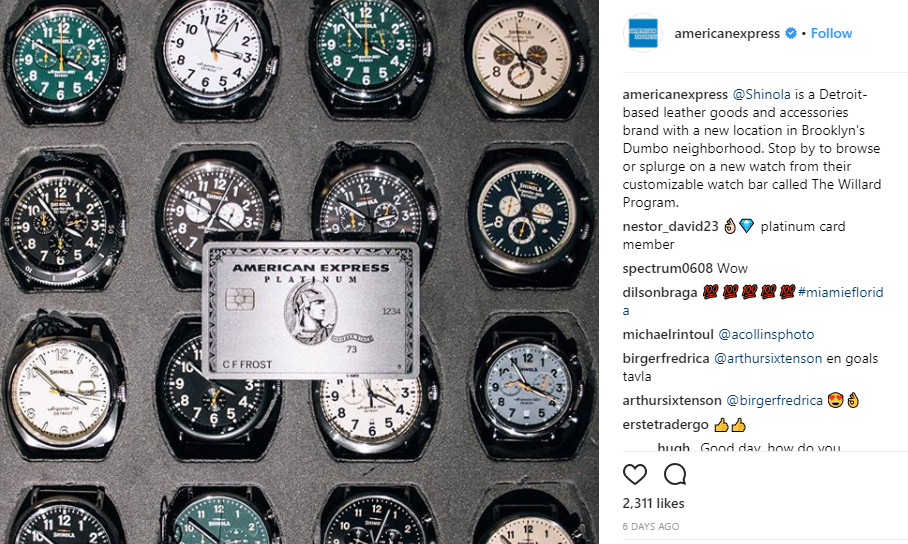Go to many leading companies’ Facebook pages and you’ll find loads of negative comments. If you feel like wincing a few times, just check these out.

Expedia trying to have a fun contest… comments are all about negative experiences with the company.
Or AmEx… a fun post about Shinola watches? Slammed with customer service complaints.

It begs the question, for mega brands: why post organic content to Facebook? Customers can call, use the website, email or use Twitter very easily for customer service. Facebook just opens up a can of worms for these big brands as the comment sections for their thoughtful, well-executed and undoubtedly expensive content is used by customers as an outlet to complain about their products. Plus, with the algorithm change, this content won’t even be served to the people who actually do appreciate it, nearly as much.
Through the numerous social media audits our team has completed for brands, we’ve noticed a trend. For many brands, Instagram is a happier place. Where negative comments prevail on Facebook, Insta sometimes has a less negative audience. Note – this isn’t the case for all brands. We always recommend keeping a close eye on sentiment and analytics, of course!
Through the numerous social media audits our team has completed for brands, we’ve noticed a trend. For many brands, Instagram is a happier place. Click To Tweet
 Take Expedia… a similar city scape of New Orleans received nothing but happy emojis and positive comments. Don’t get me wrong, there are a few complaints on Insta, but totally negligible compared to Facebook. A much more manageable amount that doesn’t take over the feed.
Take Expedia… a similar city scape of New Orleans received nothing but happy emojis and positive comments. Don’t get me wrong, there are a few complaints on Insta, but totally negligible compared to Facebook. A much more manageable amount that doesn’t take over the feed.
And, let’s look at our friends at AmEx. A couple of negative comments on this post from one user (you can’t see them here) but positive overall.
So, first off, let’s talk about why this is the case.
Reason 1: Instagram always has been a visual platform. Users go on here to share photos and artistic images first and foremost. As a result, it’s simply not as natural to consider sharing complaints. Twitter and Facebook started as text only apps, so voicing complaints comes more naturally on them.
Reason 2: Hashtag searches. Your content is coming up in many cases not because people are searching for your brand, but they’re searching one of your hashtags. These users aren’t finding you to complain, they’re finding you because your content matches their interests and appreciate what you’ve posted.
Reason 3: Instagram is newer. By the time Instagram came on the scene in October 2010, Twitter and Facebook had, like it or not, already become partially customer service platforms.
Reason 4: Facebook is an outlet for life updates – the good and the bad. How many times have you seen a friend complaining about something on Facebook? Countless. This makes it much more natural to complain to a brand on the platform.
What does this mean for your strategy? As mentioned, megabrands are the ones that see the most complaints on Facebook. If you’re a midsized company, you probably aren’t running into this problem yet. Enjoy flying under the radar, and stay the course.
If you’re a big brand, you may want to reconsider how you’re using Facebook, and given the algorithm changes, if it’s even worth still having a robust organic presence. Consider scaling back to posting just once every week or two, as this will naturally lead to fewer complaints as your posts will be served to fewer newsfeeds. Ensure that, as always, you reply to comments quickly and work to resolve customer issues.
Consider focusing your energy on Instagram, instead. Create all content through an Instagram-first lens, and then test and learn. Some may find that your Instagram audience is indeed a happier one!
For more insights on communication and brand strategy, industry trends and more, subscribe today to the Weekly Buzz here.

